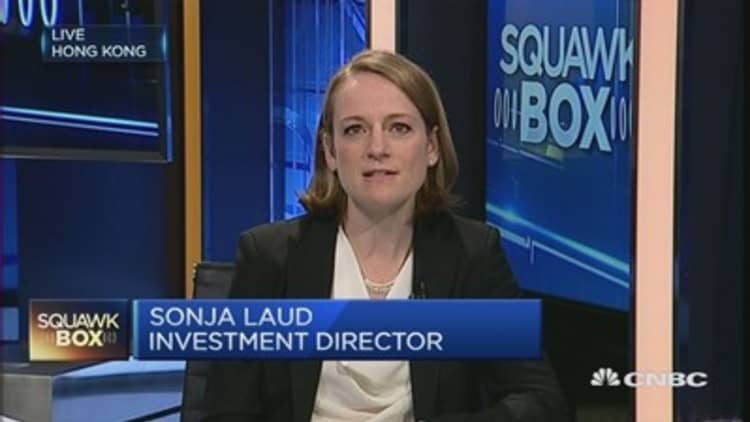
Singapore's economy grew 0.1 percent on-quarter in the July-to-September period, slightly better than expected and avoiding a technical recession. But that didn't stop the central bank from easing policy.
The Monetary Authority of Singapore (MAS), which uses the exchange rate rather than interest rates to set policy, reduced the rate of appreciation for the Singapore dollar even as it maintained its policy of "modest and gradual appreciation" for the currency. It's the central bank's second easing move this year after it surprised markets in January with a between-meeting reduction of the slope of appreciation.
The Singapore dollar climbed despite the decision, with the U.S. dollar fetching 1.3932 Singapore dollars, compared with around 1.4023 Singapore dollars before the data release and the MAS announcement. The currency may have appreciated as the MAS move wasn't as aggressive as expected, Bernard Aw, a strategist at IG, said.
Others said that the scope for further Singapore dollar weakness was limited after the central bank's decision.
"The outlook for the economy is subdued but not a cause for panic,"Daniel Martin, an economist at Capital Economics, said in a note Wednesday, adding that the MAS doesn't appear overly concerned on that front. "With the NEER (nominal effective exchange rate) trading in the lower half of the target band in recent weeks, the change in policy leaves little scope for further currency weakness in the near term and is unlikely to make a big difference to either growth or inflation,"
For the third quarter, the advance estimate for gross domestic product (GDP) rose 1.4 percent from the year-earlier period. That compares to expectations for a 1.3 percent rise on-year and a 0.1 percent decline on-quarter, according to analysts' estimates from a Reuters poll. The data, however, are preliminary and don't fully include the final month of the quarter.
Second-quarter GDP had contracted 2.5 percent on-quarter, and many analysts expected Singapore to slip into a technical recession - generally defined as two successive quarters in which the economy contracts from the previous three months.
Read MoreIs Singapore is about to enter technical recession?
The MAS said it expects the economy to expand at a modest, but slightly weaker than previously expected, pace this year and next, with inflation likely subdued. It stuck with its forecast for 2.0-2.5 percent growth this year.
GDP for the third quarter was hit by a 6.0 percent on-year decline in the manufacturing sector, following the previous quarter's 4.9 percent decline, on falls in electronics, biomedical and transportation engineering output.
"Singapore averted a technical recession, albeit only by the skin of its teeth," Mizuho said in a note Wednesday. But it added, "We concur with the MAS that the economy is not in a parlous state either," saying it expects a recovery to emerge around mid-2016. That explains why the MAS surprised analysts who had expected stronger depreciation measures for the currency, Mizuho said.
Singapore's economy last went through a recession in 2008 when a slowdown in U.S. and European consumer demand during the Global Financial Crisis hit the country's crucial manufacturing sector.
Read More Hazed in: Pollution hits Singapore fitness industry
This time round, a confluence of factors such as erratic global demand led by a slower-growing China – a major market for Singapore – and domestic issues such as a tight labor market were among the culprits dampening the outlook of the affluent city-state.
Industrial output declined more than expected in July and August, while the all-items consumer price index fell for the 10th consecutive month in August to a post-global financial crisis low.
Meanwhile, the all-important exports sector is likely to stay in the doldrums. September non-oil domestic exports (NODX) due on Friday, likely fell 3.6 percent on-year, said economists polled by Reuters, after an 8.4 percent slide in August and 0.7 percent slip in July.
-See Kit Tang contributed to this report.


